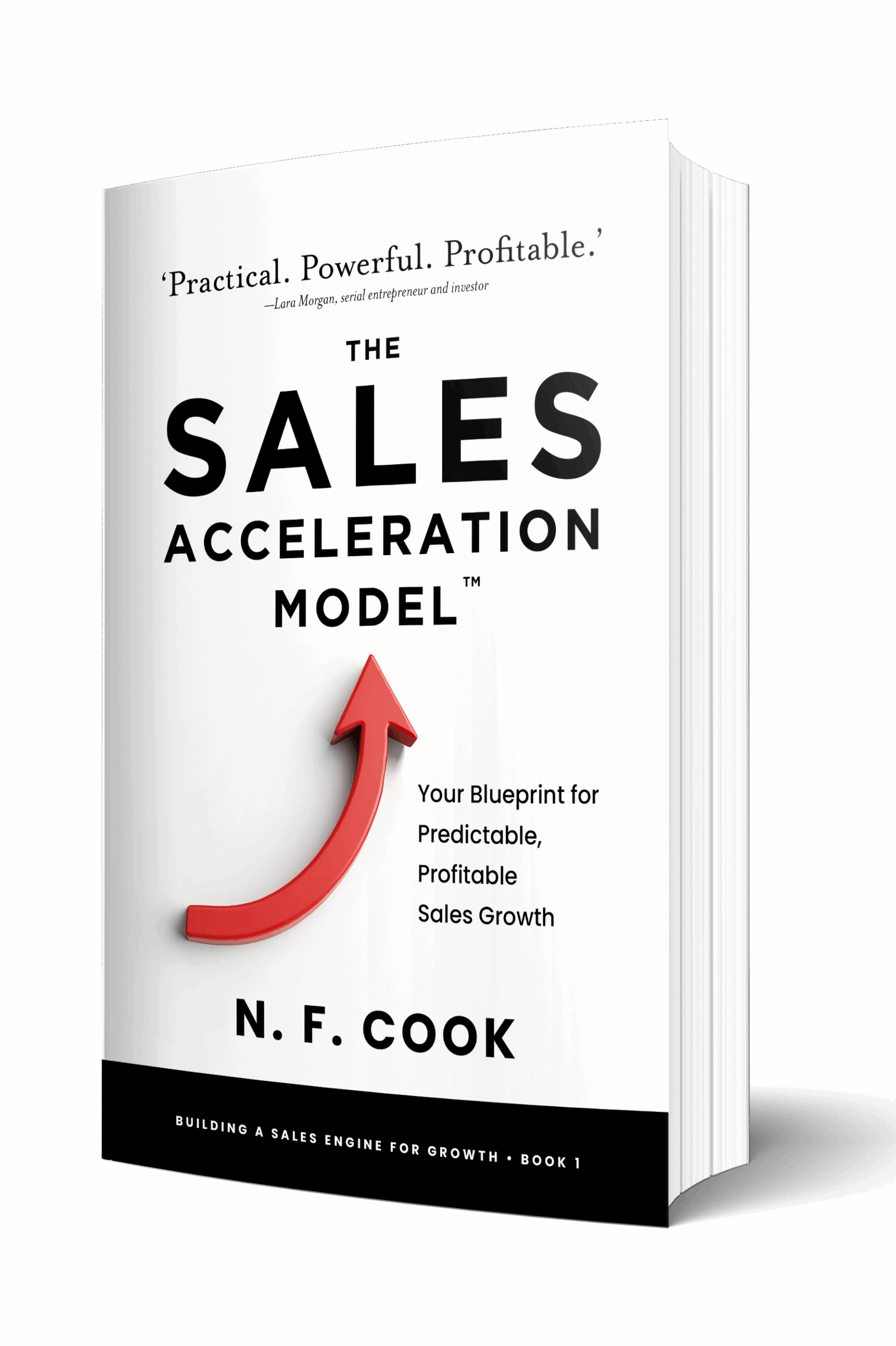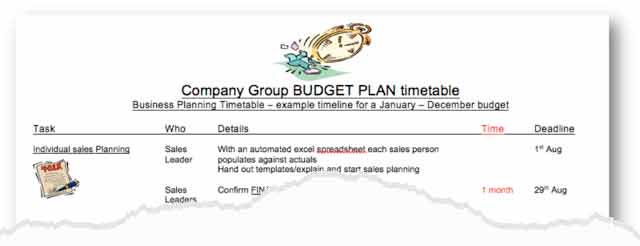Are you ready?
Making a budget – It’s that time of the year again when you should be digging out your budget planner template and planning your next financial year. Regardless of the timing of your financial year-end, there is something about the half-year mark or the close of a calendar year that signals the end of one sales period and the beginning of another.
Done well, and planned at least 6months before the beginning of your next financial year, your next budget will form the benchmark against which to measure and adjust next year’s business activities, motivating your team to stretch and overperform.
Done poorly, it will de-motivate you and your team and could lead to financial disaster, if, when executed the reality strays widely from your plan, potentially hitting your cash flow hard.
The test of a well-planned budget is not how much growth or increased sales it represents, but how well your business performance reflected the plan when considered retrospectively.
At Company Shortcuts we’ve had the pleasure of helping thousands of businesses (as well as our own) set and achieve their sales and company budgets, which is why we’ve put together this customisable template detailing who and by when you should begin compiling your budgets.
(Read to the end of this post to find out the ‘real’ story about how this template came to be)
Download the Making a Budget Timeline Template >>
Making a Budget, the Company Shortcuts Guide;
How to use the Making a Budget Timeline Template.
Ultimately your current business results are the output of your previous business decisions and actions. Therefore before making a budget for your next financial period, first consider all of the questions below. Unpack your current results to gain clarity on your current position and how you arrived there.
Follow this with the Making a Budget Timeline Template, customised to your own business to ensure you come together as a business and transition into your new financial year with a clear and considered budget signed off and in place.
Step 1: Accurately review your current numbers
 Where does your current profit come from?
Where does your current profit come from?
- Which product, services, divisions, departments or territories performed better or worse than others and why?
- Which parts of your business, if increased, would deliver more profit growth than others? (Something we refer to as Profit Priorities.)
What unplanned or poorly planned costs occurred last year?
- Cost increases, unplanned costs, or inaccurate costing in the first place will impact your margins and contribution.
- How well do you forecast not just your direct and fixed costs, but also people’s time and other variable costs in every part of your P&L?
Was your previous plan effectively resourced?
- Did you have the right people, in the right place, with the right skill set and resources needed to deliver the plan last year?
- If not, what do you need to build into your next plan to improve their skill set, or improve productivity?
- In a scale-up business, it’s imperative to keep evaluating the skill set of both yourself and your team. Are they still doing the job you originally hired them for and is that still what your business needs?
Can you detect a direct correlation between business activities and profit?
- This includes marketing spend, sales activity, production machine utilization or any other productivity metric in your business
- Until you know these numbers for your business model, you have as much chance of winning the lottery as setting an accurate plan for growth or a plan for scale.
Your numbers are a summary of the output of your collective business activities and therefore you must know what sits behind them.
Without the understanding of key metrics, you can add 100% to your sales forecast or profit forecast for next year, but not know with certainty the steps needed to deliver that growth and it becomes guesswork for you and your team.
Step 2: Devise next years plan. 
Having now reflected on your current year’s performance and using the information available to progress your decisions, also consider:
Do your sales vs. costs relate to the same month’s activity?
This will differ from sector to sector, but in some instances, sales acquired in one month do not relate to revenue and profit in that same month.
In a service based business, the direct costs of service delivery will fall in the month that the service is delivered, which may be different from the month when the sale was made and potentially income collected.
The lesson here is – if you are still doing cash accounting – STOP! A scale-up business must be recording their accounts using the accrual method in order to record accurate and real monthly profit.
This may mean that your monthly sales targets will differ from your monthly revenue targets on your budgeted P&L and therefore you will need a separate sales plan and associated targets that will differ from your Budget.
Do you need cash to hold stock?
Conversely, in a product business, you may incur costs before sales, especially if you hold stock, which needs to be manufactured, shipped and warehoused.
Do you have a plan to finance this gap or can your business cash flow any shortfalls in interim income?
Have you built in a buffer?
Build buffers within your budget, that you may or may not choose to share with others in your business.
I, for example, always set higher sales targets in our sales plan, than I allocate in our budgeted P&L and my FD only sees the budget, whereas the sales team only need be focused on their sales targets.
What would the impact be on numbers if sales dip, manufacturing is delayed, the stock’s damaged or there is a change in the team (somebody leaves unexpectedly). Could your business cope? A buffer will give you some leeway in case it’s needed.
What investment in your people, training, and your own personal development have you allocated within your budget?
As your business grows the needs of your team will also change, not least your own leadership skills.
Many businesses with growth potential reach a ‘comfort’ level and stick. This invisible ceiling reflects the growth capacity of that owner/managers leadership capability.
Unless you’ve previously grown a business beyond the point you are at now, you will need to learn a different skill set, than the skills and behaviours that have served you and your business thus far.
Have you factored this into your business development needs and budget?
Ongoing investment in yourself and your team is a must for any growing business, in order to continuously challenge the skill set and strategic thinking required to reach the next level.
What budget have you allocated for this over the next 12months?
Step 3. Remember to celebrate how far you’ve come. 
It’s very easy especially when you are making your next year’s detailed plans, to lose sight of how far you and your business has already come.
Even if the numbers are not exactly where your previous budget had suggested, make sure that you take a moment with your team to celebrate the achievements you have made together over the previous 12months, before relentlessly focusing on your next growth step.
Need more support in building a sales focused organisation?
Join us & discover new strategies to;
-
BUILD TEAMS
-
DEVELOP LEADERS
-
ACCELERATE SALES
-
GROW PROFIT
IMPORTANT NOTE:
You’ll notice that the first task on the Making a Budget Timeline Template (Download here) is requiring your current team, using a suggested company template you issue them, to submit their own sales targets.
This is important. By asking your team to set their own sales budgets, which are then reviewed with their line manager, you are transferring the ownership of those sales numbers from the leadership of your organisation to the team. Ownership builds empowerment. Empowerment builds culture, and strong culture builds exceptional customer-focused teams who win.
AND FINALLY:
Earlier in this post, I promised I would share the ‘real’ story behind the creation of the Making a Budget Timeline Template. Lara Morgan, Chairman of Company Shortcuts and Founder of Pacific Direct, which before she exited the business in 2008 was trading in over 110 countries, for a number of years became increasingly frustrated that budget setting deadlines never appeared to be adhered to.
When you are running a very complex business across multiple continents, with thousands of pieces of stock, hundreds of employees and with such complexities of currency fluctuations to contend with – this was more than just a business headache, it was potentially business damaging.
There was always one country or one department who held the process up, so it became a recurrent problem and a mad scramble at the end of the financial year to have clear budgets going into the new period – until one day when Lara metaphorically ‘threw her toys out of the pram’ and created the timeline template which is shared with you here.
Lara now has a number of business investments in her investment incubator Fun_ctionality – Company Shortcuts being one – and all of the collective business owners have benefitted from the disciplines of the timely and disciplined budget planning process we’ve shared here.




 Where does your current profit come from?
Where does your current profit come from?
